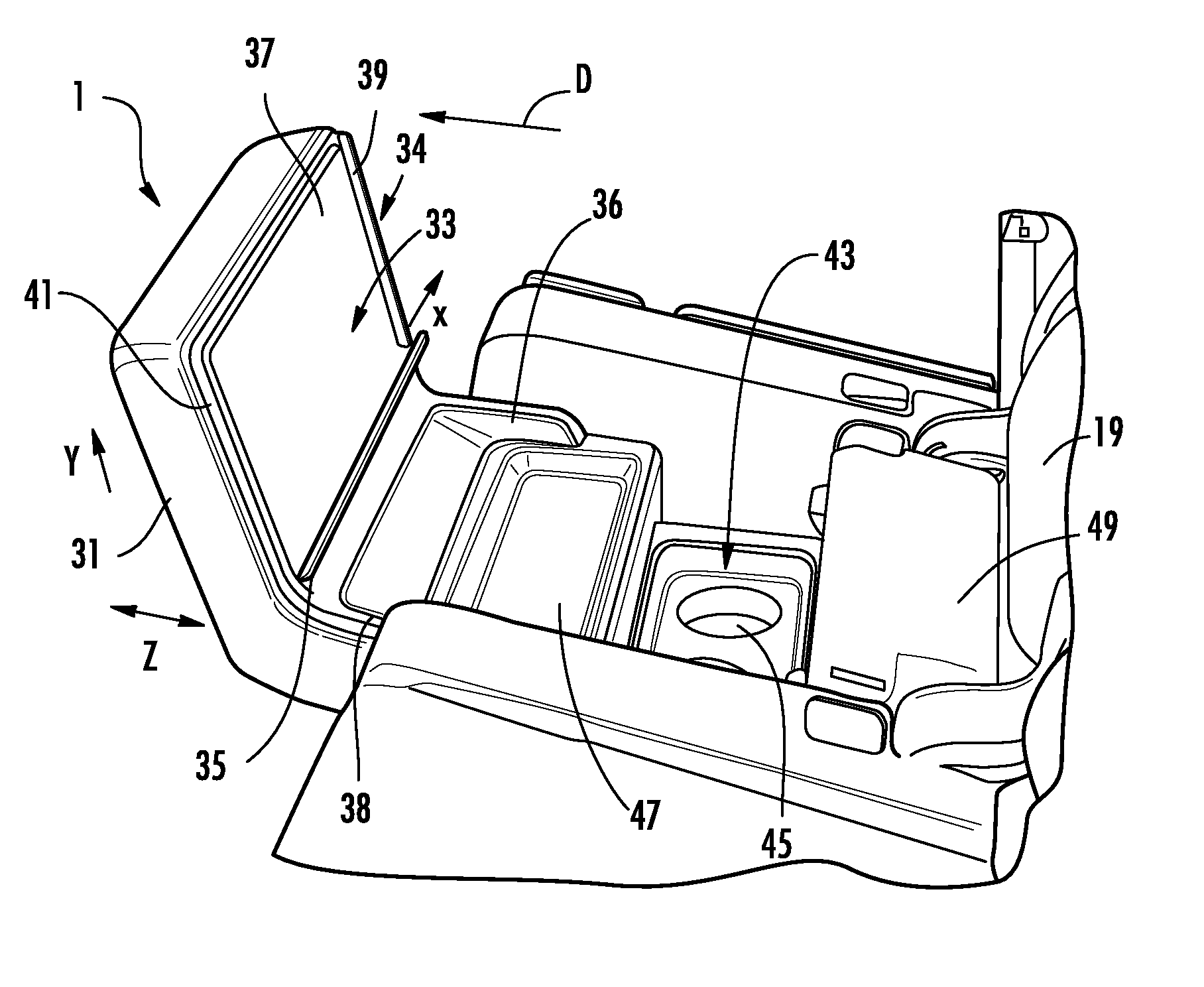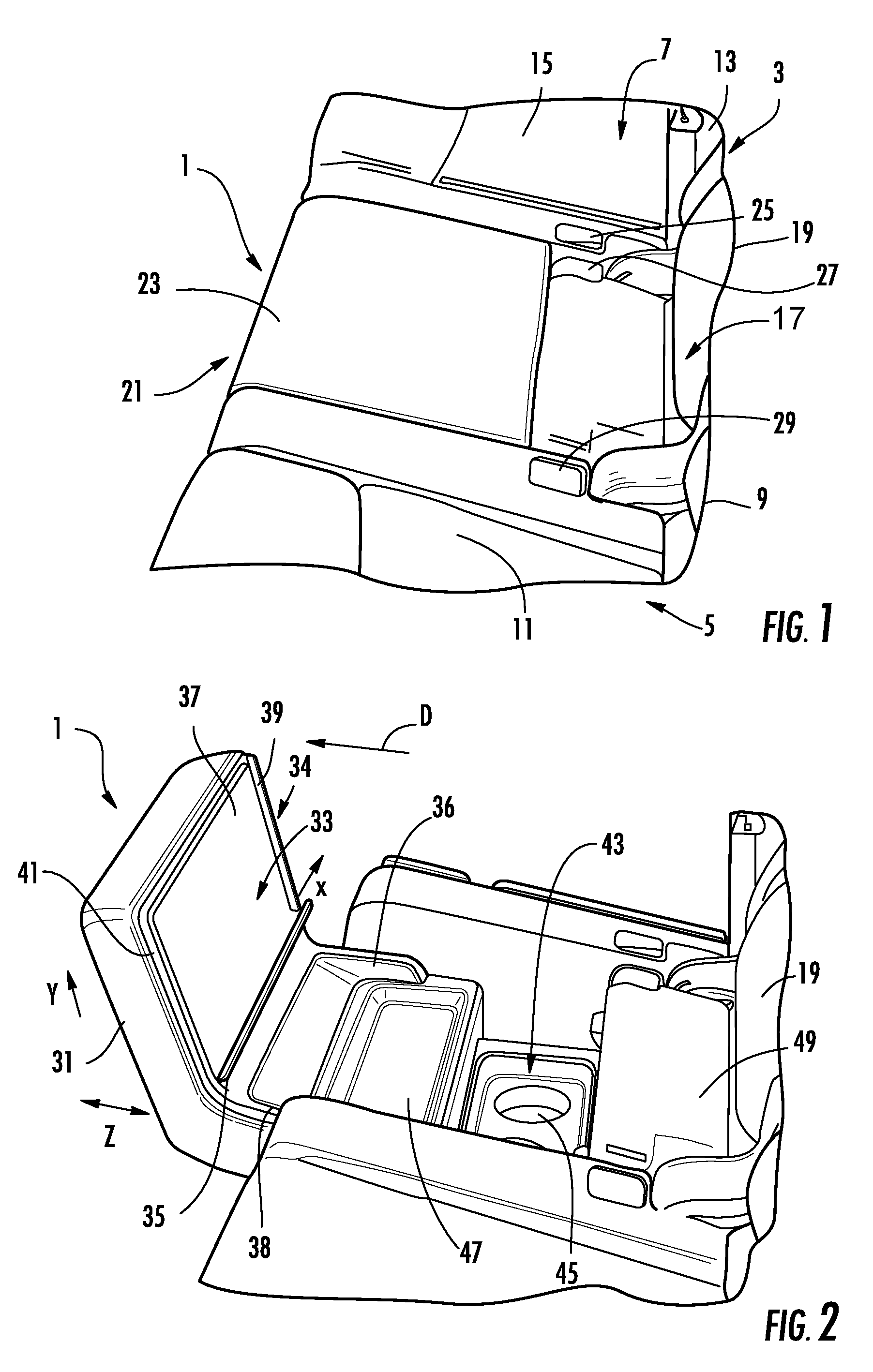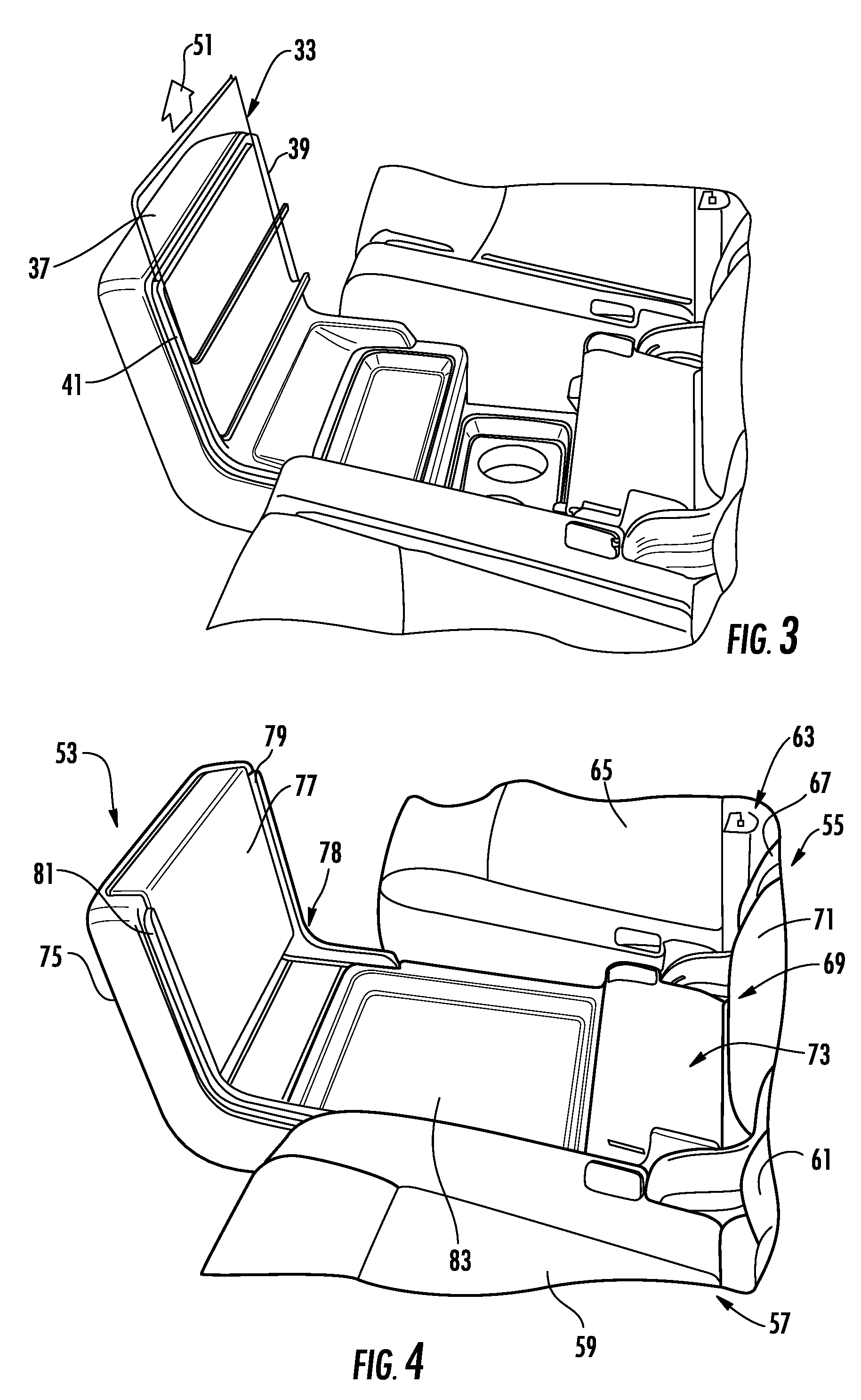Charging integration system for a vehicle
- Summary
- Abstract
- Description
- Claims
- Application Information
AI Technical Summary
Benefits of technology
Problems solved by technology
Method used
Image
Examples
Embodiment Construction
[0070]Referring to the drawings in particular, FIG. 1 shows a charging integration system 1 pivotably connected to a vehicle seat structure 3. The vehicle seat structure 3 includes a first seat 5 and a second seat 7. The first seat 5 has a backrest structure 9 for engaging at least a lumbar region of a first occupant and a seat rest structure 11 for engaging the buttocks and at least a portion of the legs of the first occupant. The backrest structure 9 may be pivotably connected to the seat rest structure 11 such that the backrest structure 9 is movable relative to the seat rest structure11. The second seat 7 has a backrest structure 13 for engaging at least a lumbar region of a second occupant and a seat rest structure 15 for engaging the buttocks and at least a portion of the legs of the second occupant. The backrest structure 13 may be pivotably connected to the seat rest structure 15 such that the backrest structure 13 is movable relative to the seat rest structure 15. The charg...
PUM
 Login to View More
Login to View More Abstract
Description
Claims
Application Information
 Login to View More
Login to View More - R&D
- Intellectual Property
- Life Sciences
- Materials
- Tech Scout
- Unparalleled Data Quality
- Higher Quality Content
- 60% Fewer Hallucinations
Browse by: Latest US Patents, China's latest patents, Technical Efficacy Thesaurus, Application Domain, Technology Topic, Popular Technical Reports.
© 2025 PatSnap. All rights reserved.Legal|Privacy policy|Modern Slavery Act Transparency Statement|Sitemap|About US| Contact US: help@patsnap.com



